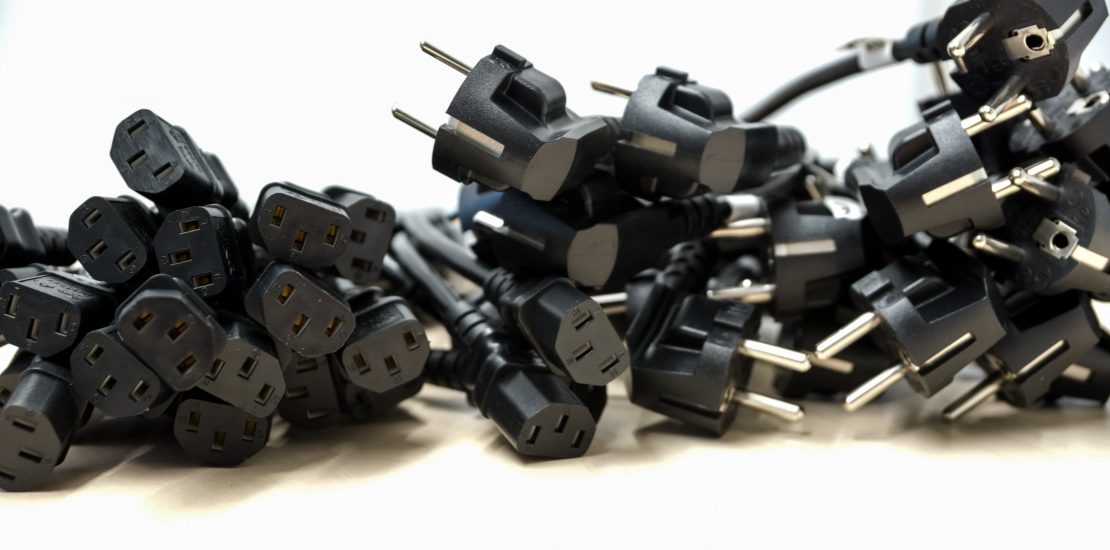- November 9, 2017
- Posted by: Paul Martinovic
- Category: Blog Posts


Power surges can damage your electronic devices and even cause them to fail. Learn about an effective yet affordable way to protect the IT assets in your business.
The computers in your business are at risk from more than just cyberattacks. They could fall victim to another threat: power surges. Simply put, a surge is a sudden, temporary increase in voltage in an electrical circuit. Surges are common, and they can damage or destroy electronic devices.
When people think of a power surge, they often envision a massive amount of electricity surging through a building’s wires because lightning struck the structure. However, the majority of surges are small and caused by sources inside of buildings, according to the NEMA Surge Protection Institute. For example, devices that switch power on and off are a common source of surges. When small surges occur multiple times a day, they gradually damage and destroy the internal circuitry of electronic devices.
To help protect your computers, printers, and other electronic devices from surges, you can use surge protectors. Here is what you need to know so you can select the best one for your business.
Types of Surge Protectors
Surge protectors fall into two categories: primary and secondary. Primary surge protectors are installed where the power lines enter a building. They are designed to protect an entire building and handle larger surges. However, they are expensive and need be installed by an electrician, so they are not used very often. For this reason, they will not be discussed further.
Secondary surge protectors are designed to protect electronic devices in the rooms where those devices are being used. Although they are not as powerful as primary surge protectors, they are affordable and more convenient to use, as you simply plug them in. Power-strip surge protectors have a cord that gets plugged into the electrical outlet, while wall-mount surge protectors get plugged directly into the outlet.
Secondary surge protectors can be based on either metal-oxide varistor (MOV) or series mode technology. MOV surge protectors allow up to 400 volts of a surge through to electronic devices, whereas series-mode protectors bring surges down to the standard AC voltage of 140 volts. Plus, unlike the series-mode units, MOV devices need to be replaced periodically because their surge protection components wear out over time. Because series-mode surge protectors offer better surge protection and last longer, they cost more than their MOV counterparts.
What to Look for in a Surge Protector
Surge protection is a mature market, so there are many different surge protectors available. Here are some important features to look for when shopping for them:
- Voltage protection rating (VPR). The VPR indicates the maximum voltage a surge protector will let through to connected devices (a.k.a. maximum let-through voltage). The lower the VPR number, the better the protection. Some surge protectors might use an older measure of maximum let-through voltage called suppressed voltage rating (SVR). Like VPR, a lower SVR number is better.
- Response time. Measured in nanoseconds, the response time tells you how quickly a surge protector reacts to a surge. The faster the response time, the better the protection.
- Joule rating. This rating specifies the total amount of energy a surge protector is capable of absorbing over time. For example, a joule rating of 2000 means the surge protector can withstand one 2000 joule hit or ten 200 joule hits over time. Once it reaches that mark, it should be replaced. You won’t find a joule rating for series-mode surge protectors, as this measurement is not applicable.
- Three-line protection. Electrical circuits have three lines (hot, neutral, and ground), and surges can occur on any of them. Therefore, it is important for surge protectors to safeguard all three lines.
- Warning light. If you are shopping for a MOV surge protector, it is a good idea to make sure it has an indicator light (or something similar) that will let you know when it needs to be replaced. Even better, get one that automatically shuts off the power to the connected electronic devices when that time arrives. A warning light can go unnoticed, especially if the surge protector is under a desk or behind a file cabinet.
Surge protectors also offer other features that might be of interest, such as:
- Shutdown circuit. High-end MOV surge protectors often include a shutdown circuit that turns off all power to the connected devices when a surge is detected. As a result, these protectors typically have a higher VPR than other MOV units.
- Ground fault circuit interrupter (GFCI) protection. A surge protector that has GFCI protection will automatically shut off power when it detects a short circuit, reducing the risk of an electrical fire.
- Energy saving feature. Some surge protectors can help you save electricity by automatically cutting power to connected devices when the devices are not in use or enter standby mode.
- Power conditioner. Power conditioners filter out noise in an electrical current. However, in many cases, this is not needed because all power supplies already have some built-in noise filtration.
An Effective Yet Affordable Solution
Even though most power surges are small, they can damage your electronic devices and even cause them to fail. Surge protectors are an effective yet affordable way to protect your IT assets.
